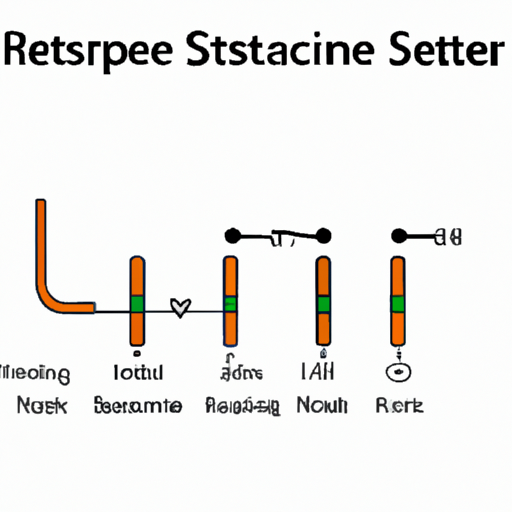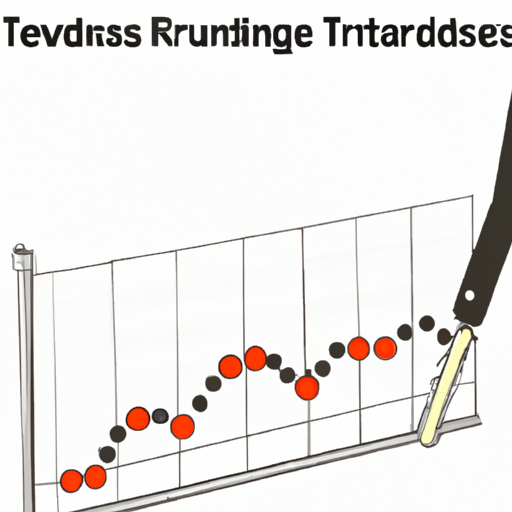What are the advantages of resistor defined products?
What are the Advantages of Resistor Defined Products?
I. Introduction
In the ever-evolving landscape of electronic design and manufacturing, Resistor Defined Products (RDPs) have emerged as a pivotal innovation. RDPs leverage the fundamental properties of resistors to define and enhance the characteristics of electronic devices. This blog post will delve into the advantages of RDPs, exploring their cost-effectiveness, design flexibility, improved performance, simplified testing, and scalability. Understanding these benefits is crucial for engineers, manufacturers, and businesses looking to optimize their electronic products.
II. Understanding Resistor Defined Products
A. Explanation of How RDPs Work
At the core of RDPs is the resistor, a passive electronic component that limits the flow of electric current. Resistors play a critical role in electronic circuits by controlling voltage and current levels, thereby influencing the overall behavior of the device. In RDPs, resistors are strategically selected and configured to define specific product characteristics, such as gain, frequency response, and power consumption.
For instance, in an amplifier circuit, the values of the resistors determine the gain of the amplifier. By changing these resistor values, designers can create a range of products with varying performance specifications without needing to redesign the entire circuit.
B. Examples of Common RDPs in the Market
RDPs can be found in various applications, from consumer electronics to industrial automation. Common examples include:
Audio Amplifiers: Resistor values dictate the gain and frequency response, allowing for tailored audio performance.
Voltage Regulators: Resistors help set output voltage levels, ensuring stable power supply for sensitive components.
Sensor Interfaces: In sensor circuits, resistors define the sensitivity and response time, crucial for accurate measurements.
III. Advantages of Resistor Defined Products
A. Cost-Effectiveness
1. Reduced Manufacturing Costs
One of the most significant advantages of RDPs is their cost-effectiveness. By utilizing resistors to define product characteristics, manufacturers can reduce the complexity of their designs. This simplification often leads to lower production costs, as fewer components and less intricate assembly processes are required.
2. Simplified Inventory Management
RDPs also streamline inventory management. With a focus on resistors, manufacturers can standardize components across multiple products, reducing the variety of parts they need to stock. This not only lowers inventory costs but also simplifies the supply chain, making it easier to manage and forecast component availability.
B. Design Flexibility
1. Customization Options for Specific Applications
RDPs offer remarkable design flexibility. Engineers can easily customize resistor values to meet specific application requirements. This adaptability allows for the rapid development of tailored solutions, catering to diverse market needs without extensive redesign efforts.
2. Ease of Integration into Existing Systems
Moreover, RDPs can be seamlessly integrated into existing electronic systems. Since resistors are ubiquitous in electronic design, incorporating RDPs into legacy systems is often straightforward, enabling manufacturers to enhance performance without overhauling entire designs.
C. Improved Performance
1. Enhanced Stability and Reliability
RDPs contribute to improved performance through enhanced stability and reliability. Resistors are known for their predictable behavior, which translates to consistent performance in electronic circuits. This reliability is crucial in applications where performance consistency is paramount, such as in medical devices and automotive systems.
2. Better Thermal Management
Additionally, RDPs can facilitate better thermal management. Resistors can dissipate heat effectively, helping to maintain optimal operating temperatures in electronic devices. This thermal stability is vital for preventing overheating and ensuring the longevity of components.
D. Simplified Testing and Validation
1. Streamlined Testing Processes
Testing and validation are critical phases in the development of electronic products. RDPs simplify these processes by providing consistent performance metrics. Since resistor values are well-defined, engineers can predict how changes will affect overall circuit behavior, making it easier to validate designs.
2. Consistency in Performance Metrics
The use of RDPs also ensures consistency in performance metrics across different production batches. This reliability is essential for manufacturers aiming to meet stringent quality standards and regulatory requirements.
E. Scalability
1. Easy Adaptation for Mass Production
Scalability is another significant advantage of RDPs. The simplicity of resistor-based designs allows for easy adaptation to mass production. Manufacturers can quickly scale up production without extensive re-engineering, ensuring that they can meet market demand efficiently.
2. Quick Turnaround for Product Iterations
Furthermore, RDPs enable quick turnaround times for product iterations. As market needs evolve, manufacturers can swiftly modify resistor values to create new product variants, allowing them to stay competitive in a fast-paced industry.
IV. Applications of Resistor Defined Products
RDPs find applications across various industries, showcasing their versatility and effectiveness.
A. Consumer Electronics
In consumer electronics, RDPs are prevalent in devices such as smartphones, televisions, and audio systems. The ability to customize performance characteristics allows manufacturers to differentiate their products in a crowded market.
B. Automotive Industry
The automotive industry benefits from RDPs in areas such as engine control units, infotainment systems, and safety features. The reliability and stability of resistor-defined designs are crucial for ensuring vehicle safety and performance.
C. Industrial Automation
In industrial automation, RDPs are used in control systems, sensors, and actuators. The flexibility and scalability of RDPs enable manufacturers to create tailored solutions for specific automation needs.
D. Telecommunications
Telecommunications equipment, including routers and switches, often employs RDPs to optimize signal processing and power management. The ability to define performance characteristics through resistors is essential for maintaining high-quality communication.
E. Medical Devices
In the medical field, RDPs are utilized in diagnostic equipment, monitoring devices, and therapeutic instruments. The reliability and precision offered by resistor-defined designs are critical for ensuring patient safety and accurate results.
V. Challenges and Considerations
A. Limitations of RDPs
1. Potential for Increased Complexity in Design
Despite their advantages, RDPs are not without challenges. One potential limitation is the increased complexity in design. While resistors simplify certain aspects, the overall circuit design may become more intricate, requiring careful consideration of resistor interactions.
2. Dependence on Resistor Quality and Specifications
Additionally, RDPs are highly dependent on the quality and specifications of the resistors used. Variations in resistor performance can lead to inconsistencies in product behavior, necessitating rigorous quality control measures.
B. Future Trends in RDPs
1. Innovations in Resistor Technology
Looking ahead, innovations in resistor technology are likely to enhance the capabilities of RDPs. Advances in materials and manufacturing processes may lead to more precise and reliable resistors, further improving the performance of resistor-defined products.
2. Integration with Smart Technologies
The integration of RDPs with smart technologies is another promising trend. As the Internet of Things (IoT) continues to grow, RDPs can play a vital role in creating intelligent devices that adapt to user needs and environmental conditions.
VI. Conclusion
In summary, Resistor Defined Products offer a multitude of advantages that make them a valuable asset in electronic design and manufacturing. From cost-effectiveness and design flexibility to improved performance and scalability, RDPs provide solutions that meet the demands of modern technology. As the electronics industry continues to evolve, the significance of RDPs will only grow, paving the way for innovative applications and enhanced product performance.
As we look to the future, the potential for RDPs to integrate with emerging technologies and adapt to changing market needs is promising. For engineers and manufacturers, embracing the advantages of RDPs will be crucial in navigating the complexities of the electronics landscape and delivering high-quality products that meet consumer expectations.
VII. References
- Academic papers and articles on resistor technology
- Industry reports on electronic manufacturing trends
- Relevant textbooks and educational resources on electronic design
By understanding and leveraging the advantages of Resistor Defined Products, stakeholders in the electronics industry can position themselves for success in a competitive market.






